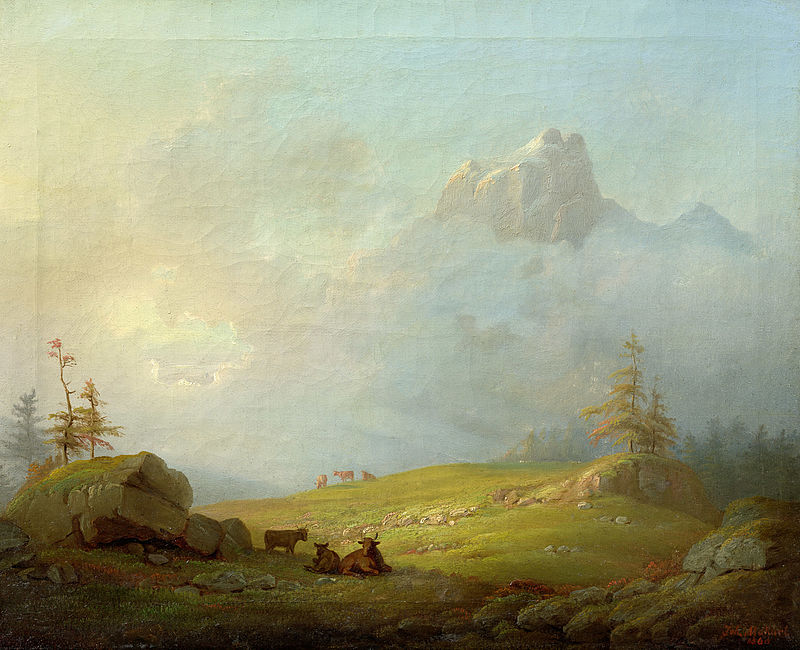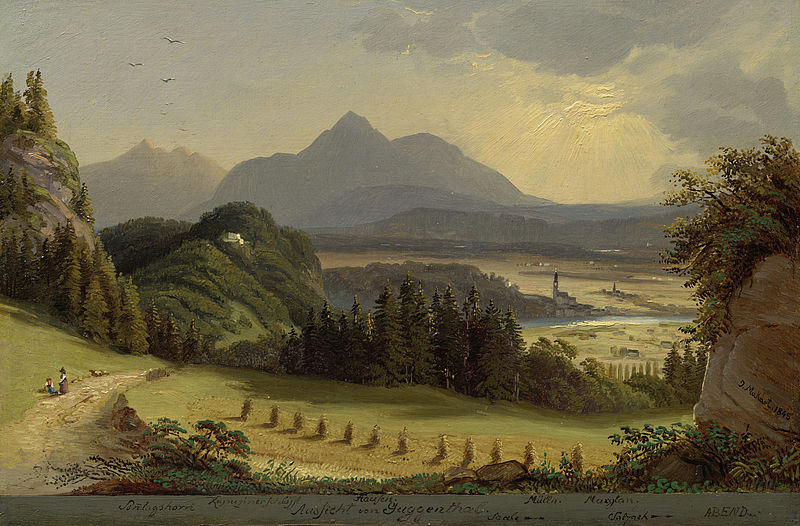Mountain pasture below the Bischofsmütze
Johann Baptist Alois Makart the Elder (1815 - 1849)
Framesize 49.00 x 57.80 x 4.20 cm
The painting hitherto entitled Almweide, by Hans Makart’s father, is registered in the Residenzgalerie inventory, established in 1927, under No. 22, as “Alpe mit weidenden Rindern, im Hintergrund der Dachstein im Nebel” ["Alpine meadow with cattle grazing, in the background the Dachstein in the mist"]. The distinctive double peak rising above the clouds is in fact probably the “Bischofsmütze” (“Grosse Bischofsmütze”: height 2,458 m; “Kleine Bischofsmütze”: height: 2,430 m) – the highest in the Gosaukamm, in the Dachstein massif. The border between the municipalities of Filzmoos and Annaberg-Lungötz is formed by the “Mützenschlucht” ravine, which separates the two summits. Its appearance was altered by a major rockfall in 1993 and further falls in 1999 and 2001.
The sun’s rays, breaking though the clouds, divide the Alpine meadow with grazing cows into zones of light and shade. The changing colour of the needles on gnarled trees growing on rocks announce the advent of autumn, when the larches “burn gold”.
Ducke Astrid: Johann Baptist Alois Makart d. Ä., Mountain pasture below the Bischofsmütze. In: Ducke Astrid, Habersatter Thomas (Hg./Ed.): Stadt - Land - Berg. Salzburg und seine Umgebung. Town - Landscape - Mountain. Salzburg and surroundings. Residenzgalerie Salzburg. Salzburg 2022, p. 158, illus. p. 159



